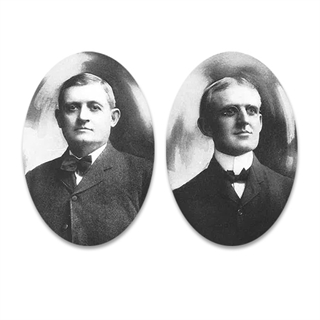
The Early Years of Innovation and Growth
Founded in 1896, the enterprising father and son team of A.J. and George A. Briggs partnered with S.A. Buffington, a Chicago lawyer, to establish Chicago Telephone Supply Company (later to become CTS).
At the time a major demand for telephones was created due to the lack of manufacturing. There was no shortage of orders, however, there was a lack of education, which would soon turn into CTS' biggest asset.
Working out of a small building near downtown Chicago, their telephones were sold through local supply houses, jobbers, and mail orders. In less than 6 years, business boomed and this small company had grown to encompass a workforce of 250 employees.

Chicago Telephone Supply's Expansion
In 1902, in need of more, yet less expensive manufacturing space, the company found suitable facilities in Elkhart, Indiana, about 100 miles east of Chicago. The rapid growth of Chicago Telephone Supply can be attributed to its focus on a market niche that had been largely ignored by other telephone manufacturers, the rural telephone market. Period company catalogs show a wide variety of telephones and components produced during this time. One of the company’s earliest product line expansions included the production of telephone switchboards.
By 1910, the company was producing a wide variety of telephone models, as well as 20 different types of switchboards ranging from apartment building size units up to express switchboards that could accommodate up to 300 telephone connections.
With their economic telephone and switchboard systems designed to have a higher degree of efficiency than will ever be demanded in service (a company promotional phrase), Chicago Telephone Supply quickly became a leading producer of telephones and systems for rural areas. The company marketed its products by the statement, “Chicago Telephones Satisfy,” indicating the high level of quality that the company designed into their products. The last commercial telephone produced by the company was manufactured in 1940.
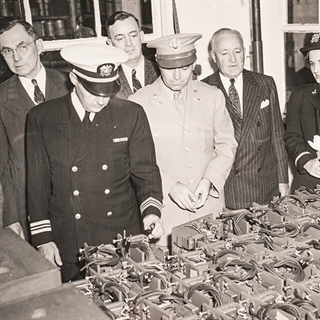
Adaptation in Radio and Military Technologies
The beginning of radio broadcasting in the 1920s triggered a boom for consumer radio receivers. Chicago Telephone Supply Company began re-inventing some of its well-known telephone products, such as jacks, plugs, and headphones for use in the emerging radio market.
By 1922, more than half of company sales came from the radio components business. During the Great Depression, demand for less expensive tabletop radios grew and Chicago Telephone Supply Company responded with the development of more cost-effective and stable carbon composition variable resistors that helped lower the cost of radio components. During this time, the company evolved from a manufacturer of finished products (telephones and switchboards) to a manufacturer of components.
During WWII, the U.S. Army needed a link to the frontline troops, so Chicago Telephone Supply Company integrated telephone and radio component technologies to develop the RM-29 remote telephone fieldset. The Army / Navy Production Award for Excellence was presented to Chicago Telephone Supply Company for outstanding wartime production of more than 300,000 RM-29 field telephones. Then, in answer to a request from the Massachusetts Institute of Technology (MIT) Radiation Laboratory, engineers worked to create the RLB, a precision potentiometer for radar units. This new technology enabled the Allies to conduct night air strike missions, vital to shortening the war. In later years, peacetime applications for the RLB included air traffic safety, enhanced weather forecasting, and medical diagnosis.

Pioneering Strategies in the Great Depression
During the great depression, CTS had to take economic measures, much like many other companies. CEO Floyd Best identified a market for developing components for midget radios. Small radios that were able to be set on a tabletop and cost a quarter of the price of a regular-sized radio. To ensure the future of these products, CTS hired college-educated engineers during the Depression to develop best-in-class components.
To ensure component designs were the best choice for customers, CTS sent engineers out into the field to test the components and even make on-site changes to ensure the components were optimal for the radio manufacturers. These practices are what led radio manufacturers to be confident in CTS as their supplier during the Depression era.
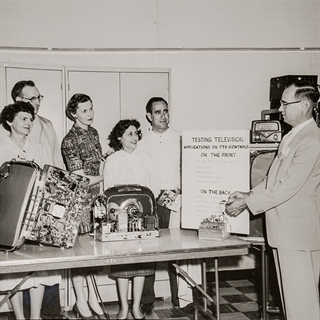
Supporting the Television Boom
The late 1940s ushered in the next boom in consumer electronics – television. Chicago Telephone Supply Company, already a leading supplier of radio components, applied the technology of variable resistors and switches to the new television market. Illustrating the rapid growth of this new market, U.S. manufacturers produced 6,000 television receivers in 1946, and by 1950 that figure soared to 7,500,000.
Where a radio receiver may have used one, two, or three Chicago Telephone Supply components, a television receiver required between 6 and 10 variable resistor components. This increased component count drove company production and profits to new heights.

Development of Advanced Electronics
While still enjoying growth driven by the consumer television industry, CTS once again looked to another new, emerging market for opportunities. The data processing or computer market fit the bill and CTS answered with new, innovative products. In 1958, after 4 years of intensive research, CTS engineers introduced Cermet, a new type of stable resistance element.
The stability of Cermet fulfilled the demand of miniaturized applications for the computer, as well as military industries, securing CTS’ participation in modern electronic markets.
Pictured is Otis Boykin, a lead engineer for CTS who supported the development of Cermet and many other devices during his employment at CTS.
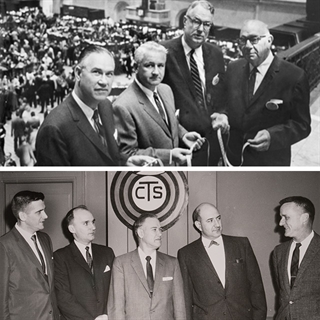
Becoming a Public Company
By the beginning of the 1960s, Chicago Telephone Supply Company had diversified into a manufacturer of many types of switches, variable resistors and a variety of other electronic components. Yet, the company had not produced a commercial telephone for over 20 years. After decades of expanding into new markets with new technologies and product innovations, it became clear that the original name no longer fit the company.
In 1960, Chicago Telephone Supply Company officially changed its name to CTS Corporation to more accurately reflect its diverse product line offerings. June 4, 1962 was the day that CTS listed its common stock on the “Big Board” at the New York Stock Exchange. The day marked a turning point in the evolution of CTS as a company, for the listing on the New York Stock Exchange helped give the company greater visibility as an international business.
During the same period, CTS, through acquisitions and internal development, expanded its product portfolio to include crystal filters, quartz oscillators, selector switches, and loudspeakers, along with its expanding variable resistor business. As demand in the electronics industry called for the miniaturization of electronic products, CTS responded by manufacturing hybrid microcircuits, designing more functionality into smaller packages, for applications as varied as heart pacers to missile guidance systems.
The evolution of consumer electronic manufacturing drove many U.S.-based electronic manufacturers to open operations in Asia. In 1968, CTS established a manufacturing operation in Taiwan to serve the off-shore production facilities of North American-based OEMs and counter low-cost Asian component manufacturing. The increased world presence helped CTS further expand product applications into international markets. Quality, lower-cost CTS quartz crystals are designed into new applications – color televisions.

Driving Automotive Sensor Solutions
As CTS transitioned into the 1970s, concerns over environmental pollution led to U.S. Government-mandated automotive emissions control requirements. The need for throttle position sensing and exhaust gas recirculation controls immersed CTS into the custom under-the-hood and chassis position sensor business, opening new market opportunities for the company.
Recently, CTS’ Automotive Products achieved a strategic growth milestone by expanding into the commercial vehicle, off-road, and heavy equipment markets. CTS developed and introduced a robust Smart Actuator that is designed for such applications as fuel delivery management, and control of variable vane turbochargers and is suitable for a variety of other large diesel engine management functions. Additionally, CTS Automotive Products supplies position sensors to the small engine market (motorcycles, ATVs, outboard engines, etc.).
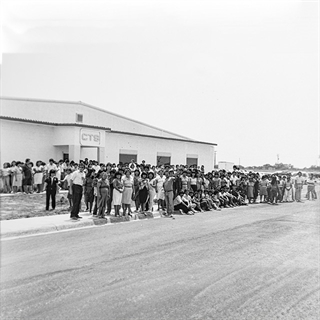
Expanding Global Reach and Product Offerings
CTS continues to provide innovative solutions by utilizing Cermet technology to supply domestic automotive manufacturers with reliable under-the-hood position sensors.
In the early 1980s, CTS acquired a successful connector and backplane manufacturer with operations in North America and Scotland. Additionally, this Scottish connection opened many new European market opportunities for CTS position sensor products.
Later in the decade and in order to address growing global market demand, CTS completes facility expansions in Mexico, Singapore, Scotland, the U.S., Canada, Hong Kong, and Taiwan, further increasing CTS’ global presence.
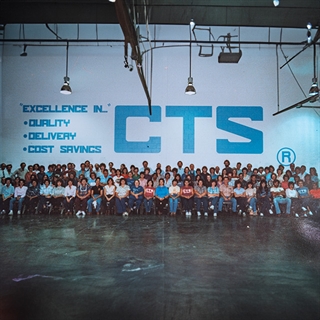
CTS Celebrates Reaching 100 years
In 1996 CTS celebrated its 100th Anniversary, reaffirming a commitment to develop new component technologies, meet customer specifications, and exceed customer expectations.
In 1999, CTS acquired Motorola’s Component Products Division (CPD). Renamed CTS Wireless Components, this acquisition placed CTS at the forefront of the emerging cell phone handset and base station market through the manufacturing of ceramic filters, duplexers, and other telecommunication components.
In addition, a late 1990s merger with Dynamics Corporation of America (DCA) bolstered CTS’ position as a leading producer of electronic components.
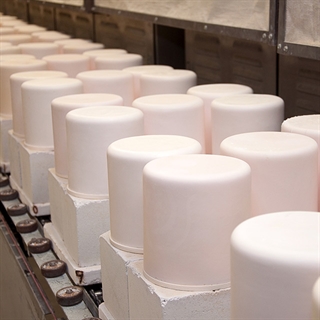
Acquisitions Fueling Market Expansion and Growth
During the late 2000s and early 2010s, CTS completed a series of acquisitions to expand into key markets and drive growth.
In 2007, CTS completed the acquisition of Alpha Ceramics, a provider of piezoceramic materials for sensor and transducer manufacturers in military and aerospace markets. As a result, CTS enhanced its leading global position in piezoceramics with a unique range of capabilities.
The 2008 acquisition of Tusonix, Inc., with manufacturing operations in Nogales, Mexico, added electromagnetic and radio frequency interference (EMI/RFI) filter components to the CTS product family.
In 2012, CTS completed the acquisition of Valpey-Fisher Corporation, a leader in the design and manufacture of precision frequency crystal oscillators. The acquisition expanded CTS’ technology and engineering capabilities.
2012 was also the year that CTS acquired D&R Technology (D&R), a privately-held manufacturer of custom designed sensors, switches and electromechanical assemblies serving the automotive light-vehicle market. The acquisition significantly expanded CTS’ strategic automotive sensor product platform with new customers and a broader product portfolio.

CTS in the Last 10 Years
Presently, CTS is positioned as a leader in the sensors, actuators, and electronic components markets. Having recently entered into the temperature sensing market following its acquisition of QTI Sensing Solutions in 2019. The company has further enriched its expertise through strategic acquisitions, including Sensor Scientific Inc. in 2020 and TEWA Temperature Sensors in 2022. Combining a century of sensing technology knowledge with leaders in the temperature sensing market will bring out stronger, more advanced technologies.
2021 marked CTS Corporation’s 125th anniversary. While we are proud of CTS’ legacy, we remain committed to carrying our guiding principles into the future: Play to Win, Responsiveness, Simplicity and Solution-Oriented.
Over nearly 12 decades, CTS has evolved from a modest team of 250 individuals into an international manufacturing powerhouse with over 4,000 employees. Embracing a culture of innovation, we constantly seek new avenues to develop smarter and more advanced technologies. Our history serves as a testament to our ability to navigate and overcome significant economic and technological challenges, instilling pride in our achievements and propelling us toward future success.
Together with our customers, we look forward to seeing what the next 125 years bring.